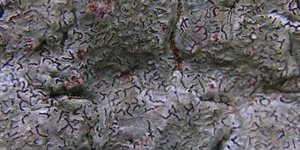Melchet Court, naturalist groups/recording weekend, Wiltshire, Sunday, 7th July 2013
The Wessex Lichen Group joined a recording weekend at an old park, with veteran Oaks, which had not been recorded for lichens perviously, we started at the front of the main school building SU2705 2231, at 10.30. The weather was hot and sunny. The lichen contingent was small, Neil Sanderson and Andy Cross, with Zoe joining us for a bit.
When we arrived, the moth people were sorting out the nights catch, which included the classic lichen camouflaged moth, the Pepper Moth, along with other wonderful and curious moths.
Moths
Melchet Park is a landscape park located within the site of a medieval deer park in the former royal forest of Melchet. Unlike the adjacent New Forest, this royal forest declined and the site reverted to farmland when disparked in 1610 but was then restored as a landscape park in the late 18th century link. There are no obvious very old trees surviving from the medieval deer park, but the oldest Oaks are likely to be former hedgerow trees predating the modern park. The main house, Melchet Court is now a school special school providing care and education for boys who experience behavioural, emotional and social difficulties.
Temple Park and a map of the park
We started by walking north into Temple Park. In the first grazed field (SU2622) there were a couple of clumps of mature Ash and Oak and some older Oaks. The first clump had a general flora with a twig assemblage suggesting moderate nitrogen enrichment, typical of parkland. The second clump to the north had some older Oaks and more interesting lichens, with a tree tagged 0391 with Parmotrema reticulatum in a well developed Well Lit Mature Mesic Bark Community (Parmelietum revolutae), and a second, tagged 0389 (MP001, SU26956 22481), had abundant Punctelia reddenda, an old tree specialist in a similar community.
Lichens in the grazed field in Temple Park
North of the grazed field was a unimproved hay meadow with scattered old Oak retained from old pre landscape park field boundaries. The hay meadow itself was floriferous and attractive. The bulk was NVC community MG5a, but grading to M23a in a wet corner. Knapweed Centaurea nigra was abundant along with other plants such as Silaum silaus, Oenanthe pimpinelloides, Carex nigra, Carex panicea and Briza media. Several of the old Oaks had good old parkland tree assemblages:
Old Oak (MP002, SU27086 22575) (Tag 0382) with Cresponea premnea Nb (IR), Calicium salicinum, Arthonia vinosa, Punctelia reddenda, Cyphelium sessile Nb (NS) parasitising Pertusaria coccodes and Lecanora barkmaniana Nb (NS).
Old Oak (MP003, SU27125 22532) (Tag 0386) with Calicium salicinum, Cresponea premnea Nb (IR), Physconia distorta, Punctelia borreri and Ramalina canariensis. Ideally remove the nearby Hawthorn, which is shading the trunk.
Ancient Oak (MP004, SU27234 22607) (Tag 0384) this was not so good as it was too burry but it added the old tree specialist Arthonia priunata, a species of nutrient enriched dry bark on ancient Oaks.
To the east of the avenue was a large Oak on the road verge (MP007, Tag 0324, SU27657 22339). This had base rich bark with the moss Homalothecium sericeum along with Rinodina roboris var. roboris Nb (IR), Enterographa crassa and Schismatomma decolorans. As this tree is in mown, not grazed, grassland it is being invaded by Ivy, which is a threat to the survival of Rinodina roboris, which was not seen on any other tree during the survey.
Avenue lichens
From the avenue we went into the eastern grazed field of Temple Park, where there were a few more parkland trees of interest:
Post mature Oak (MP008, SU27394 22391) with Cyphelium sessile Nb (NS) parasitising Pertusaria coccodes.
An old Ash with (MP009, SU27487 22463) Lecanora barkmaniana Nb (NS) and Normandina pulchella.
Close too the above tree was an old Horse Chestnut with wound tracks supporting Lecania cyrtellina Nb (NS) with adjacent Enterographa crassa.
We then had a look in the wood east of the pond. This is a recent secondary woodland that has invaded the former parkland by the pond and the stream to the north. There were still surviving old parkland trees set in the recent woodland. Where not too shaded these were also of interest, with some woodland lichen species recorded, which were not seen on the open parkland trees. The richest Oak (MP010, SU27575 22439) supported the ancient woodland species Opegrapha corticola Nb (IR) and Agonimia allobata Nb (NS) along with Enterograpa crassa and Cresponia premea Nb (IR). The woodland was most shaded and species poor but some smooth bark communities were beginning to developed on Hazel and Holly with Stenocybe septata Nb (IR) noted on the latter.
Parkland Oak in recent woodland
We recorded 77 taxa (see species list), including six NIEC ancient woodland indicators, two Nationally Scarce and four Internationally Responsibility species. The lichen assemblages is not outstanding but is a good one for normal farmland and countryside.
Download the KMZ file to view the route and waymarks in Google Earth, or view as picture by clicking on the text link below.



